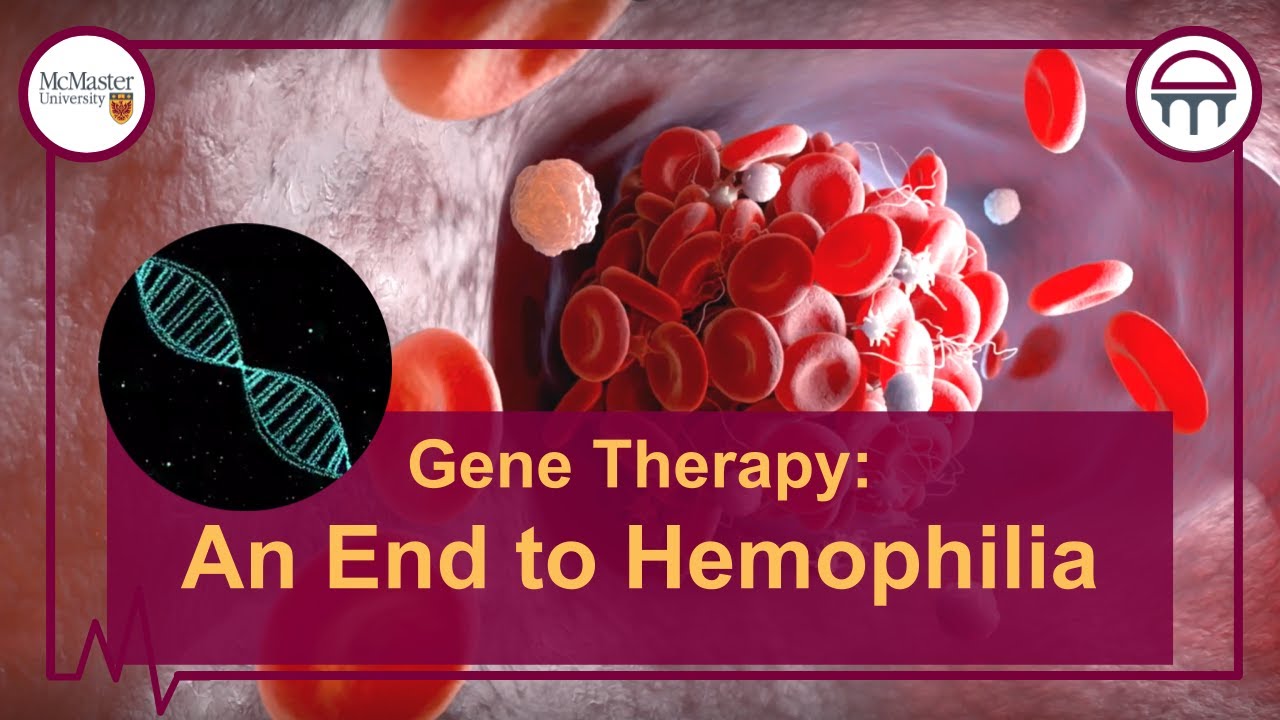Punnett Squares and Sex-Linked Traits (UPDATED)
Summary
TLDRThis educational video script delves into the underappreciated role of platelets in blood clotting and introduces hemophilia, a sex-linked recessive disorder affecting blood's ability to clot. It explains how hemophilia is inherited, with a focus on X chromosomes, and guides viewers through solving Punnett squares for sex-linked traits. The script also clarifies misconceptions about sex-linked traits, highlights the difference between dominant and recessive inheritance, and touches on the complexity of genetic disorders beyond single-gene traits.
Takeaways
- 🩸 Platelets are crucial for blood clotting and preventing excessive bleeding, but their function is often underappreciated.
- 🩹 Hemophilia is a genetic disorder that impairs the blood's ability to clot, making even minor injuries dangerous due to continuous bleeding.
- 💊 Advances in treatment have significantly improved outcomes for individuals with hemophilia, though historical management was less effective.
- 🧬 Hemophilia is a sex-linked recessive trait, which differs from typical Mendelian inheritance patterns as it is carried on the X chromosome.
- 🧬 Sex-linked traits are determined by alleles on sex chromosomes, with the X chromosome carrying more genes and being larger than the Y chromosome.
- 🧬 Females typically have XX sex chromosomes, while males have XY, but variations with additional or fewer chromosomes can occur.
- 🧬 X-linked traits are more common because the Y chromosome is smaller and carries fewer genes, making the X chromosome the primary carrier of sex-linked traits.
- 🔬 Punnett squares are used to predict the inheritance of sex-linked traits, illustrating the possible genetic outcomes of offspring.
- 🔄 Hemophilia is represented by a recessive allele 'h' on the X chromosome, with females needing two 'h' alleles to express the disorder, while males only need one.
- 👨👩👧👦 In a Punnett square, the probability of offspring inheriting hemophilia from unaffected carrier parents is 25%, with a 75% chance of not having the disorder.
Q & A
What is the primary function of platelets in the human body?
-Platelets are fragments of cells that help stop bleeding by aiding in blood clotting when we get hurt.
What is hemophilia and how does it affect the body?
-Hemophilia is a disorder that affects the ability of blood to clot properly, which can make even a small cut dangerous due to continuous bleeding.
How have treatments for hemophilia evolved over time?
-Treatments for hemophilia have greatly improved outcomes, although the script does not provide specific historical details about the evolution of these treatments.
What is a sex-linked recessive trait and how does it differ from general Mendelian genetics?
-A sex-linked recessive trait is a genetic trait that is carried on the sex chromosomes and follows a different pattern of inheritance compared to autosomal traits. It is characterized by the trait being expressed when an individual has two copies of the recessive allele, which is more common in males due to their XY chromosome composition.
What are the differences between X and Y chromosomes in humans?
-The X chromosome is larger and contains more genes than the Y chromosome. Males typically have one X and one Y chromosome (XY), while females have two X chromosomes (XX).
Why are most sex-linked traits found on the X chromosome rather than the Y?
-Most sex-linked traits are found on the X chromosome because it is larger and contains more genes than the Y chromosome, which is smaller and carries fewer genes.
How is hemophilia represented in a Punnett square?
-In a Punnett square, hemophilia, being a recessive sex-linked disorder, is represented by a lowercase 'h' allele placed as a superscript on the X chromosome.
What is the significance of the genotypes XHXh and XhY in the context of hemophilia?
-The genotype XHXh indicates a female carrier of hemophilia who does not exhibit the disorder, while XhY indicates a male with hemophilia because males have only one X chromosome and thus express the recessive allele if present.
What is the probability of a child having hemophilia if one parent is a carrier and the other is unaffected?
-There is a 25% chance that a child will have hemophilia if one parent is a carrier (XHXh) and the other parent is unaffected (XHY).
What are some key considerations when working with sex-linked traits in Punnett squares?
-Key considerations include not assuming a trait is sex-linked without indication, recognizing that sex-linked recessive traits are more common in XY genotypes, understanding that sex-linked dominant traits require only one dominant allele, being aware that not all genetic disorders follow simple Mendelian inheritance patterns, and knowing that different species may have different sex chromosome systems.
Outlines

Esta sección está disponible solo para usuarios con suscripción. Por favor, mejora tu plan para acceder a esta parte.
Mejorar ahoraMindmap

Esta sección está disponible solo para usuarios con suscripción. Por favor, mejora tu plan para acceder a esta parte.
Mejorar ahoraKeywords

Esta sección está disponible solo para usuarios con suscripción. Por favor, mejora tu plan para acceder a esta parte.
Mejorar ahoraHighlights

Esta sección está disponible solo para usuarios con suscripción. Por favor, mejora tu plan para acceder a esta parte.
Mejorar ahoraTranscripts

Esta sección está disponible solo para usuarios con suscripción. Por favor, mejora tu plan para acceder a esta parte.
Mejorar ahoraVer Más Videos Relacionados

Punnett Squares and Sex-Linked Traits (OLD VIDEO)

Hemophilia (Year of the Zebra)

Pola Hereditas Part 2 : Pautan (Linkage)

Gene Therapy: An End to Hemophilia

Coagulation cascade | Human anatomy and physiology | Health & Medicine | Khan Academy

Example punnet square for sex-linked recessive trait | High school biology | Khan Academy
5.0 / 5 (0 votes)
